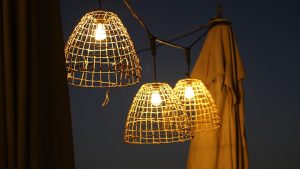Introduction
Desk lamps have been a staple of workspaces for centuries, providing the much-needed illumination for tasks that require precision and concentration. Over time, certain models of desk lamps have become iconic due to their designs, usefulness, and reliability. This article explores the evolution of iconic desk lamps, from classic to contemporary, highlighting their unique features and contributions to the design world.
Classic Desk Lamps
The first desk lamps were simple fixtures with incandescent light bulbs that were used for reading and writing. The earliest models were made of brass or cast iron and had a classic design that is still popular today. The Banker’s Lamp, for example, is a classic desk lamp that features a green glass shade and a brass base. It was first designed in the early 20th century and is still used in banks and libraries around the world.
The Emergence of the Gooseneck Lamp
Another classic desk lamp that emerged in the early 20th century was the gooseneck lamp. This lamp features a flexible arm that bends to direct the light where it is needed. It was designed for use by draftsmen and artists who needed extra illumination when working on detailed drawings. The gooseneck lamp quickly became popular among students, office workers, and anyone who needed extra light while working at their desks.
Mid-century Modern Lamps
The mid-century was a time of rapid innovation and experimentation in design. This period saw the emergence of iconic desk lamps that were minimalist, sleek, and functional. The Anglepoise Lamp, for example, was designed in 1933 by George Carwardine, an automotive engineer. It features a weighted base, three springs, and an adjustable arm that can be moved in any direction. The Anglepoise Lamp became a design icon and was used extensively in homes and offices throughout the mid-century.
The Rise of Task Lighting
As the demands of the workplace changed in the mid-century, so did the design of desk lamps. Task lighting became more important as workers found themselves spending more time on detailed tasks that required focused lighting. The Tensor Lamp, for example, was designed in the 1950s and is still used today. Its unique design features a flexible arm and adjustable shade that can be positioned to focus light on a specific area.
Contemporary Desk Lamps
As technology has advanced, so has the design of desk lamps. Contemporary desk lamps are often designed to be energy-efficient and are sometimes powered by USB or rechargeable batteries. The Lumiy Lightblade LED Desk Lamp, for example, provides ultra-bright LED lighting with no flicker or glare. It also features a touch-sensitive control panel and a flexible arm that can be adjusted in any direction.
Minimalist and Functional Design
Contemporary desk lamps often feature minimalist and functional designs, taking cues from the mid-century modern movement. The Dyson Lightcycle Desk Lamp, for example, is a high-end desk lamp that uses daylight-quality LED lighting to provide the right light for the time of day and the user’s needs. It also features a motion sensor that turns the light off when the user is away from the desk and an ambient light sensor that adjusts the brightness based on the surrounding light.
Conclusion
In conclusion, desk lamps have come a long way since their early days as incandescent bulbs on a metal stand. From classic designs like the Banker’s Lamp to mid-century modern designs like the Anglepoise Lamp to the contemporary Lumiy Lightblade LED and Dyson Lightcycle Desk Lamps, desk lamp designers have continued to innovate and improve upon this essential piece of office equipment. As work and technology continue to evolve, so will the design of desk lamps, ensuring that they remain a key component of any modern workspace.





More Stories
The Elegance of Spiral Staircase Chandeliers: A Perfect Blend of Form and Function
The Elegance of Sconce Hallways: Illuminating Your Passages with Style
Illuminate Your Space with Adjustable Wall Lights in the UK